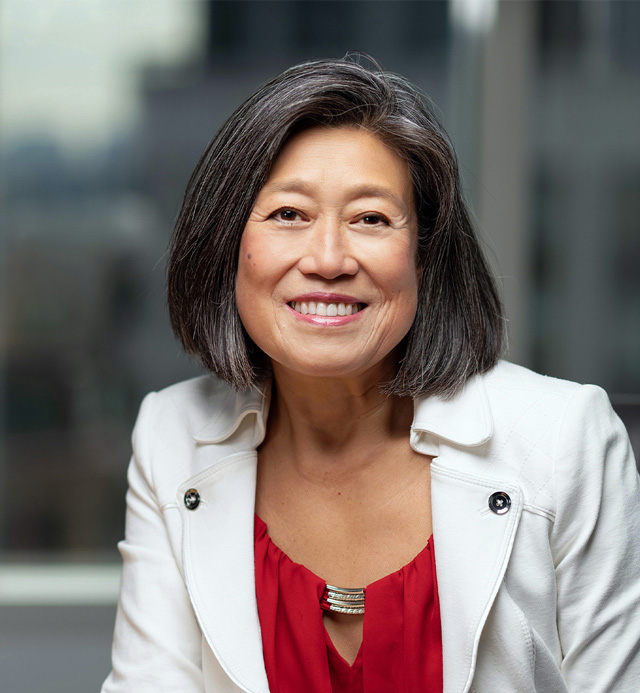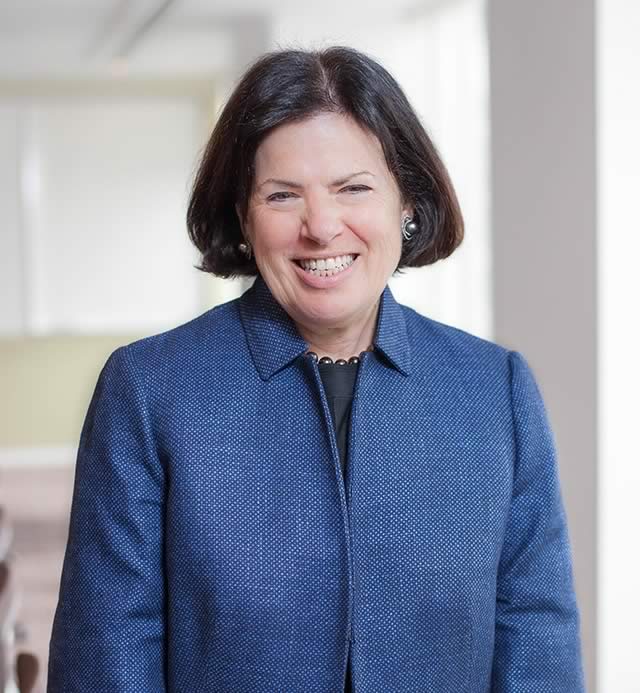-
Power System Modernization and Decarbonization: A Q&A with Judy Chang
In October 2023, Analysis Group welcomed Judy Chang to the firm as a Managing Principal. Ms. Chang has had a distinguished career in energy economics and policy, advising a wide array of clients on energy investments. She brings a wealth of regulatory and policy experience, having served as undersecretary of energy and climate solutions for Massachusetts, a role that involved shaping the state’s energy and decarbonization strategies.
Ms. Chang spoke with Analysis Group CEO and Chairman Martha Samuelson about decarbonization efforts in the US and elsewhere, updating the power grid to meet 21st-century challenges, and takeaways from her policy work.
Given your experience with energy policy and economics, what do you see as being the most important trends and changes?
Ms. Chang: Two broad areas stand out as particularly important today. One is a series of efforts to modernize the US power grid to increase its efficiency and reliability. The other, related, area is the ongoing decarbonization efforts that consumers, corporations, and governments are pursuing, and the effects of those efforts on many sectors of the economy.
Let’s talk about decarbonization first. The transition to a future with lower carbon emissions is happening across many countries and in some US states.
Ms. Chang: Yes. As an example, California’s recently enacted climate disclosure law will require companies that have at least $1 billion of annual business in the state to publicly disclose their GHG [greenhouse gas] emissions and report on their climate-related financial risks.
To comply with California’s law and others like it, corporations will have to analyze and report data that they may not have collected in the past. Specifically, they will disclose the direct emissions from their own operations – whether that is manufacturing products or operating a facility – known as Scope 1 emissions. They will also be reporting Scope 2 emissions, from the energy used to produce the goods or services provided, and Scope 3 emissions, associated with the upstream and downstream uses.
Some companies have already begun to confront these questions based on proposed SEC [US Securities and Exchange Commission] rules, and they present significant challenges for data collection and analysis. The complexities include: How does one quantify emissions? How would companies measure GHG emissions for assets they don’t directly own or control? How does one ensure accuracy and accountability?
What about activity at the national level?
Ms. Chang: In part, I see many efforts that are likely to have a substantial effect on decarbonizing the US economy. But reaching these goals will require dramatic changes to and investments in our infrastructure.
For instance, the federal government and some states have offered incentives for the adoption of electric vehicles [EVs]. But to truly support a society with more EVs will require major investments in the EV charging infrastructure and thoughtful planning about and investments in our electricity distribution and transmission systems.
For another example, in the building sector, we are seeing a much more significant move toward high-performance and high-efficiency buildings, with a greater use of electric heat pumps that heat and cool buildings efficiently. The US Department of Energy recently announced a program to develop cost-effective solutions to electrify buildings while increasing their efficiency and demand flexibility. This is an important goal. But achieving it will require significant investment in retrofitting buildings and, simultaneously, our electricity grid in order to meet this new electric demand.
“[T]he utilities and stakeholders who understand the constraints under which regulators work are the most successful at reaching their own objectives. I’ve learned that regulatory success comes by working well with regulators, not against them.”– Judy Chang
That gets us back to the other major trend you mentioned: the significant reforms and modernization that our power system will require to accommodate these major transitions across economies.
Ms. Chang: That’s right. Some efforts are underway to ensure a well-functioning power grid capable of meeting the challenges of a clean-energy transition. But we are a long way away from what is needed. For example, most systems around the world need a new plan for the power grid to account for the anticipated demand growth over the next few decades. These plans will require significant investments from utilities, with innovative thinking around how the electric transmission and distribution systems need to be modernized.
In addition, the wholesale electricity markets need to be redesigned to efficiently accommodate the rapid addition of clean-energy resources being driven by both economics and laws. The market rules will need to adapt to the new realities while ensuring that proper price signals are encouraging investors and consumers to invest in new technologies that help keep the lights on. These changes will significantly impact new and existing power resources, including demand-side investments.
Of course, we cannot simply modernize the systems without changing the way we charge customers. Thus, innovative ratemaking will be acutely important, both to utilities and to their customers, who increasingly want to monitor and control their own consumption. These regulatory and market changes will have dramatic implications for energy companies and utilities going forward.
You have a robust background on the policymaking side of the energy arena. What lessons did you take from your experience working with the Massachusetts government that are likely to inform your work here at Analysis Group?
Ms. Chang: Regulators must operate within a confined space, with a focus on existing laws, governmental goals, and stakeholders’ interests. Thus, the utilities and stakeholders who understand the constraints under which regulators work are the most successful at reaching their own objectives. I’ve learned that regulatory success comes by working well with regulators, not against them. Furthermore, I now recognize the importance of cross-sector planning, where the initiatives in one sector, such as transportation, can have dramatic impacts on the electricity industry. Or how building codes can affect the financing of real estate, which can, in turn, affect the pace of deployment of solar photovoltaics in a community.
Around the world, we are entering an era in which dramatic investment in new infrastructure is needed, which offers great opportunities to investors and financiers. But any major projects will have to have comprehensive community engagement plans, from inception to the full deployment of the project and beyond. Investors who take stakeholders’ interests seriously from the outset are much more likely to succeed in their endeavors.
Finally, what issues do you see ahead that should be front of mind for utilities, system operators, and legal actors?
Ms. Chang: Generally, the risks that the energy world faces today are even greater than the ones we faced in the past, and the pace of the coming changes is unprecedented. Extreme weather events, for instance, create risks for energy companies, from fuel availability to supply chain maintenance. And connecting a large amount of intermittent renewable energy sources, over a short period of time, onto a legacy system without updates can create other risks. These challenges raise questions such as: How should we think about system modeling and planning to best mitigate these risks? How should regulatory and financial uncertainties be incorporated into contracts between developers and energy buyers, or between utilities and their regulators or customers?
These are difficult questions, but I’m excited to be part of a team committed to finding state-of-the-art solutions to them. ■
From Forum 2023.



